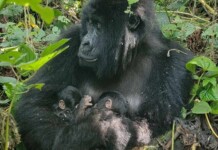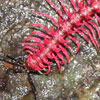 Every year scientists at Arizona State University lead an international team in naming the top 10 newly discovered species: the most weird, reclusive and lethal of more than 10,000 new to science each year.
Every year scientists at Arizona State University lead an international team in naming the top 10 newly discovered species: the most weird, reclusive and lethal of more than 10,000 new to science each year.
The International Institute for Species Exploration along with a committee of taxonomists – scientists responsible for species exploration and classification – added their votes to come up with the top 10 new species found in 2007. On the list are an ornate sleeper ray, with a name that sucks: Electrolux; a 75-million-year-old giant duck-billed dinosaur; a shocking pink millipede; a rare, off-the-shelf frog; one of the most venomous snakes in the world; a fruit bat; a mushroom; a jellyfish named after its victim; a life-imitates-art “Dim” rhinoceros beetle; and the “Michelin Man™” plant.
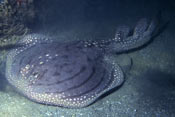
Among the top 10 picks is an ornate sleeper ray – Electrolux addisoni – whose name reflects “the vigorous sucking action displayed on the videotape of the feeding ray” from the east coast of South Africa that “may rival a well-known electrical device used to suck the detritus from carpets.”
Also on the list is a 75-million-year-old giant duck-billed dinosaur – Gryposaurus monumentensis – discovered in southern Utah by a team from Alf Museum, a California-based paleontology museum on a high school campus.
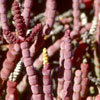 From the plant kingdom is the “Michelin Man™” plant – Tecticornia bibenda – a succulent plant in Western Australia that resembles the Michelin® tire man.
From the plant kingdom is the “Michelin Man™” plant – Tecticornia bibenda – a succulent plant in Western Australia that resembles the Michelin® tire man.
And, in the category of life imitating art is a “Dim” rhinoceros beetle – Megaceras briansaltini – which, according to the author, looks like the Dim character from the Disney film “A Bug’s Life.”
“The international committee of taxon experts who made the selection of the top 10 from the thousands of species described in calendar year 2007 is helping draw attention to biodiversity, the field of taxonomy, and the importance of natural history museums and botanical gardens in a fun-filled way,” says Professor Quentin Wheeler, an entomologist and director of ASU’s International Institute for Species Exploration.
“We live in an exciting time. A new generation of tools are coming online that will vastly accelerate the rate at which we are able to discover and describe species,” says Wheeler. “Most people do not realize just how incomplete our knowledge of Earth’s species is or the steady rate at which taxonomists are exploring that diversity. In 2006, for example, an average of nearly 50 species per day were discovered and named.
“We are surrounded by such an exuberance of species diversity that we too often take it for granted. Charting the species of the world and their unique attributes are essential parts of understanding the history of life and is in our own self-interest as we face the challenges of living on a rapidly changing planet,” Wheeler says.
16,969 Species Discovered in a Single Year
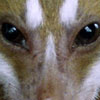
The taxonomists reported that 16,969 species new to science were discovered and described in 2006. The majority of which were invertebrate animals and vascular plants, which according to the report reflects, in part, “our profound ignorance of many of the most species-rich taxa inhabiting the planet.”
This year marks the 250th anniversary of the beginning of animal naming.
There are about 1.8 million species that have been described since Carolus Linnaeus initiated the modern systems for naming plants and animals in the 18th century. Scientists estimate there are between 2 million and 100 million species on Earth, though most set the number closer to 10 million.
Another element of the institute’s public awareness campaign is the co-production of a humorous video on biodiversity titled “Planet Bob,” launched . The video, produced with Media Alchemy of Seattle, combines live action, state-of-the-art animation, and the vocal talents of venerable TV host Hugh Downs and others.
The institute launched a video on YouTube last October, a humorous take on bio-diversity that they hope will inspire the next generation of species explorers. See their video and pop culture Web site at www.PlanetBob.asu.edu
An international committee of experts, chaired by Janine Caira of the University of Connecticut, selected the top 10 new species for this year’s list. Nominations were invited through the species.asu.edu Web site and generated by institute staff and committee members themselves.
Source: species.asu.edu
Thanks to GNN member, Katherine, for the story tip and link!




